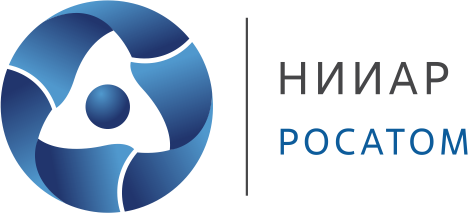Влияние термического отжига на теплопроводность графита марки ГР-280, облучённого до высокого флюенса нейтронов.
Статья посвящена изучению влияния нейтронного облучения и послереактороного термического отжига в диапазоне значений температуры от 600 до 1 200 °С на теплопроводность графита марки ГР-280, облучённого при 450–650 °С до флюенса нейтронов (0,5–1,5)·1026 м–2. Коэффициент теплопроводности определяли методом лазерной вспышки. В результате проведённых исследований был установлен характер зависимости теплопроводности исследуемых образцов от температуры и длительности отжига. Показано, что коэффициент теплопроводности начинает восстанавливаться при температуре 800–900 °С; разность между коэффициентом теплопроводности образцов до и после отжига при температуре 1 200 °С находится в диапазоне от 19 до 39 Вт/(м·К) и уменьшается с увеличением флюенса нейтронов и температуры облучения; коэффициент теплопроводности после отжига увеличивается в среднем в 2,3 раза независимо от параметров облучения.
Ключевые слова: реакторный графит; нейтронное облучение; радиационные дефекты; термический отжиг;
коэффициент теплопроводности.
EFFECT OF THERMAL ANNEALING ON THE THERMAL CONDUCTIVITY
OF GRADE GR-280 GRAPHITE IRRADIATED UP TO A HIGH NEUTRON FLUENCE
© E.P. Belan, D.V. Kharkov (e-mail: bri@niiar.ru)
Neutron absorber accumulated in the solid moderator of the reactor entails changes in the most important physical characteristics, i.e. reactivity margin, control rods efficiency, reactivity effects. Therefore, a continuous monitoring of the beryllium blocks condition and their visual inspections are required. The described procedure allows the accumulation of lithium-6, tritium, helium-3 as well as hydrogen and helium-4 to be monitored. The accounting of the last nuclide is of primary importance since it effects greatly on the mechanical durability of the beryllium blocks. The information obtained is used to plan the reactor campaigns, load the core and perform scheduled maintenance operations The paper presents the study on the effect of neutron irradiation and post-irradiation thermal annealing (at 600–1 200 °С) on the thermal conductivity of grade GR-280 graphite irradiated at 450–650 °С up to a neutron fluence of (0.5–1.5)·1026 m–2. The thermal conductivity coefficient was evaluated by the laser flash method. The study resulted in stating the nature of the thermal conductivity of samples in question vs. temperature and annealing duration. The thermal conductivity coefficient is shown to start recovering at 800–900 °С. At 1 200 °С, the difference in the thermal conductivity coefficient of samples before and after annealing ranges from 19 to 39W/(m·K) and it decreases as the irradiation temperature and neutron fluence become higher. After annealing, the relative change in the thermal conductivity coefficient makes up about 2.3 no matter the irradiation parameters are.
Key words: reactor-grade graphite; neutron irradiation; irradiation-induced defects; thermal annealing; thermal conductivity coefficient.
Все права защищены. Использование материалов сайта без ссылки на источник запрещено © 2008-2023
АО «ГНЦ НИИАР» 433510, Ульяновская область, г. Димитровград, Западное шоссе, д. 9.
E-mail: niiar@niiar.ru. Тел.: 8 (84235) 9-83-83. Факс: 8 (84235) 9-83-84


